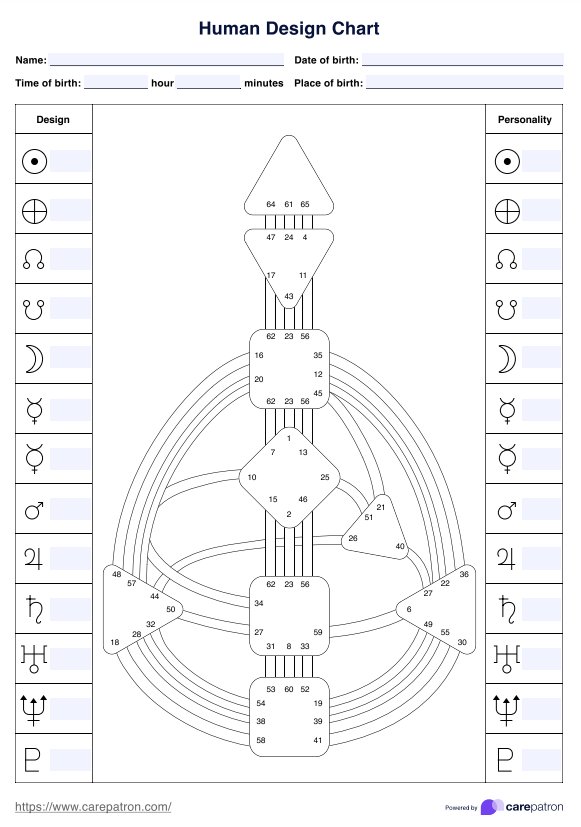A human design chart is a comprehensive tool that provides a detailed understanding of an individual’s energy dynamics, personality traits, and decision-making tendencies. It is calculated using the client’s birth information, including their date, time, and location of birth, adjusted to the correct time zone. By integrating ancient wisdom from systems like astrology, the I Ching, the Kabbalistic Tree of Life, and the Hindu-Brahmin Chakra system with insights from modern science, Human Design charts offer a holistic view of how individuals are uniquely designed to navigate their lives. For professionals, these charts provide key insights into how clients can make aligned decisions, enhance relationships, and live authentically while achieving practical goals.

Human Design Chart Template
Explore our high-quality human design chart template for an in-depth, introspective look at your client’s well-being. Elevate health outcomes and strengthen the level of care in your practice.
Human Design Chart Template Template
Commonly asked questions
The free Human Design Chart Template is a valuable resource for documenting and interpreting a client’s unique chart. To begin, download the template from the website and save it to your device for easy access. During your session, gather the client’s birth information, including their city of birth, time, and date. Use this data to calculate their Human Design chart using a trusted tool. Once the chart is generated, complete the template by filling in details such as the client’s Type, Strategy, Authority, and key observations about their energy centers. Include personalized interpretations and insights in the notes section to ensure the document is clear and actionable.
Human Design Chart Templates are powerful tools for enhancing client outcomes by providing clarity and understanding about their authentic selves. By exploring the client’s energy dynamics and tendencies, the chart helps identify patterns in decision-making and highlights areas of strength or sensitivity. These insights can be used to improve relationships, align with natural tendencies, and develop personalized strategies for navigating life’s challenges.
EHR and practice management software
Get started for free
*No credit card required
Free
$0/usd
Unlimited clients
Telehealth
1GB of storage
Client portal text
Automated billing and online payments











